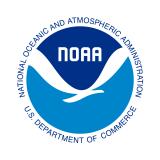Assessing Drought in a Changing Climate: December 6, 2023
How will climate change affect how we assess drought? How can we assess if a drought was made worse because of a warming climate? This webinar, hosted by NOAA's National Weather Service (NWS) and National Integrated Drought Information System (NIDIS), focused on challenges in assessing and communicating drought conditions in a changing climate. The presentations and feedback received during this webinar will help NWS to develop practical field office guidance for messaging drought in a changing climate, based on the best available science.




